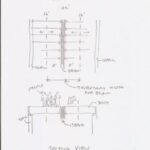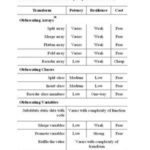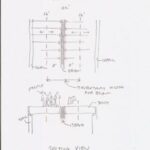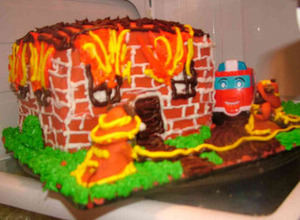1. Introduction
The International Residential Code (IRC) has prescriptive provisions for concrete house design. That is cool, because that means that you don’t have to hire an Engineer (or Architect) to a design concrete house. I mean you can if you want to (hire an Engineer or Architect), but we’re expensive. There are limitations to these provisions, however. Stay within the limits, and the `Code’ provides a way; stray outside … we’ll, we’re in the yellow pages. You’ll need to hire one of us to design it in all or part.
These provisions are probably largely motivated by the relatively recent appearance of the Insulated Concrete Form (ICF) systems. These systems are cool. They provide the `forms’ for the cast-in-place concrete, and, unlike traditional forms which are removed once the concrete cures, these forms stay, and provide insulation and substrate for wall finishes, as well as plumbing and electrical space. But it makes sense that there would be prescriptive provisions for concrete construction, since there already are provisions for light frame wood construction.
What is further cool is that these provisions allow for non-ICF construction as well. In other words, if you want to build a concrete home with traditional forming, you can.
2. Limitations
Well, here is kind of a summary of the limitations. They might seem `restrictive’, but, remember, the idea is to provide you with a way to have a safe structure without having to hire an Engineer. If you don’t like the limitations, in whole, or part, then you’ll need to hire an Engineer to design it, in whole, or part. Another way of saying this is that, yes, the Code does allow for the engineering design of just portions, if just portions don’t fit the limitations.
Here are the gross limitations.
1. Maximum building dimension (length) … 60 ft.
2. Maximum building width … 32 ft.
3. Maximum number of stories above grade … 2.
That right there allows for a pretty big structure. Let’s see … if we have a basement, … then 60 x 32 times 3 stories (incl. basement) … gives 5760 square feet. That’s a sizable residence!
Here are some more limitations.
4. Roof … must be light frame construction.
5. Floors … must be light frame construction (except basement which may be slab-on-grade).
6. Exterior walls must align vertically.
Most the roofs around here are light frame wood construction anyway, so that is no big deal. The limitation on the floors can be a bit irritating, as many future home owners (around here) like the thought of concrete floors with (in-floor) radiant heat. And, to top it off, there are now pretty cool ICF (concrete) floor systems. It is precisely this scenario that still brings me consulting work (for design of structures that would otherwise not need engineering).
The `walls aligning vertically’ suggests that the structure might be kind of `box-ish’, but there are lots of things you can do to a box to dress it up. And, it doesn’t have to be, say, all one width. Things can bump and jog, as long as they do so vertically.
There are other limitations, but if you can get a grip on the ones presented, especially in the initial building planning, you can find your way through design to a successful end. If the limitations of the Code are saved for last (after room layout, sizes, etc. have been decided), the resulting fallout can be quite frustrating.
3. Provisions
Once you have a plan that `fits’ within the limitations, the rest of the prescriptive code tells you basically how to build the structure. You’ll have to decide on the kind of system you are going to use:
1. Flat Face,
2. Waffle-Grid, or
3. Screen-Grid.
Structurally, the Flat-face system is equivalent to the traditionally formed system. The Waffle-grid and Screen-grid systems are more `complicated’ … in that, instead of flat face (uniform thickness) concrete wall cores, there are horizontal and vertical `channels’ of concrete. (Yikes!)
Once you have decided on the system, the Code then spells out (with text and figures) the … wall construction including over and around openings (lintels), minimum percentage of solid wall length (for stability), wall-to-floor connections, and wall-to-roof connections. The quality (and strength) of concrete you will need is spelled out, the grade of reinforcement, and so on. The reading gets `tough’ at times, especially if you are new to construction. I liken reading the Code to the Bible … sometimes it takes a number of reads through to `get the message’. You might have to find someone who has ventured the path before you to do some explaining.
4. Conclusion
Around here (the Inland Northwest) it has taken about a `decade’ for concrete home construction to become accepted. Contractors have wanted to `play it safe’ and stick with wood (all wood construction), with which they are familiar, and for which there have already been prescriptive provisions. And it is also now `accepted’ by the building authorities, especially now with it being in the model code (IRC). The contractors now willing to take on something new are doing exciting projects. If you are thinking of your next home being concrete, start looking at systems, and talking to contractors, and begin thinking of whether your structure will fit into `prescriptive’, or need to be engineered.
5. References
International Residential Code, International Code Council, 4051 West Flossmoor Road, Country Club Hills, IL 60478.







